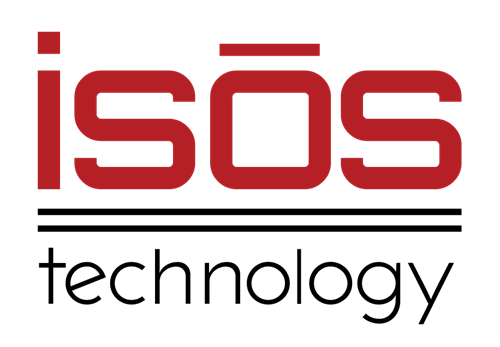 Key Takeaways
Key Takeaways
- Atlassian Cloud security is built on a shared responsibility model where Atlassian manages infrastructure and application security while customers control user access and data governance.
- Comprehensive data protection includes encryption both in transit and at rest, with flexible data residency options for regulatory compliance.
- Advanced identity and access management capabilities provide granular control over who can access sensitive information through SSO integration and enforced multi-factor authentication.
- Atlassian maintains extensive compliance certifications including ISO/IEC 27001, SOC 2 Type II, PCI DSS, and FedRAMP, simplifying regulatory adherence for customers.
- Continuous security monitoring and dedicated incident response teams provide proactive protection against emerging threats across the Atlassian Cloud platform.
In today's enterprise landscape, IT leaders face increasing pressure to balance innovation with security compliance. As organizations transition to Atlassian Cloud, understanding the robust security framework and shared responsibilities model becomes essential for maintaining data integrity and meeting regulatory requirements. Atlassian Cloud security features provide comprehensive protection while enabling your teams to focus on delivering business value rather than managing infrastructure.
The Shared Responsibility Model: Understanding Security in Atlassian Cloud
The foundation of Atlassian Cloud security rests on a clearly defined shared responsibility model that establishes accountability between Atlassian and your organization. This framework creates transparency around security obligations while streamlining compliance efforts across your Atlassian Cloud environment.
In the Atlassian Cloud shared responsibility model, Atlassian manages infrastructure security, application security, and platform reliability. The company focuses on securing the applications, systems, and hosting environments while ensuring compliance with relevant standards like ISO27001, SOC2, and GDPR. This approach allows Atlassian to deliver enterprise-level security at scale through continuous monitoring, vulnerability management, and security incident response protocols.
Your organization maintains responsibility for user access management, data governance, and third-party app security. This includes controlling which users access your data, implementing proper permission structures, and carefully evaluating marketplace apps before installation. By understanding these distinct responsibilities, IT leaders can develop targeted security strategies that complement Atlassian's robust platform protections.
The shared responsibility model creates clear accountability while enabling both parties to focus on their areas of expertise. Atlassian leverages its deep security knowledge to protect the platform, while your organization applies its understanding of internal requirements to manage users and data appropriately. This partnership approach delivers stronger security outcomes than either party could achieve independently.
Security-conscious organizations benefit from this model by focusing security resources on areas under their control rather than attempting to secure underlying infrastructure. By embracing the shared responsibility framework, IT leaders can accelerate cloud adoption while maintaining rigorous security standards throughout their Atlassian environment.
Identity and Access Management: Securing Your Atlassian Cloud Environment
Effective identity and access management forms the cornerstone of Atlassian Cloud security, providing granular control over who can access sensitive information within your organization. Atlassian Access delivers enterprise-grade identity management that integrates seamlessly with your existing security infrastructure while enforcing consistent authentication policies.
Atlassian Cloud security features include robust multi-factor authentication (MFA) capabilities that significantly reduce unauthorized access risks. By requiring multiple verification methods before granting system access, MFA creates additional security layers that protect against credential theft and brute force attacks. This protection extends across all Atlassian Cloud products, ensuring consistent security enforcement throughout your environment.
Single sign-on (SSO) integration allows IT leaders to connect Atlassian Cloud with existing identity providers like Okta, Azure AD, or Google Workspace. This integration streamlines user management while enforcing consistent authentication policies across all enterprise applications. When users leave your organization, administrators can instantly revoke access across all connected Atlassian products, eliminating security gaps during offboarding processes.
Role-based access control enables precise permission management based on job functions and security requirements. Administrators can assign permissions at organization, project, and content levels, ensuring users access only the information necessary for their responsibilities. This granular approach minimizes internal threat surfaces while simplifying compliance with regulatory requirements like GDPR and HIPAA.
Automated user provisioning and deprovisioning reduces administrative overhead while strengthening security posture. When integrated with your identity provider, Atlassian Cloud automatically creates and removes user accounts based on your organization's directory changes. This automation eliminates manual processes that often create security vulnerabilities through overlooked access termination or inconsistent permission assignment.
Identity and access management capabilities in Atlassian Cloud deliver both security improvements and operational efficiencies. By centralizing authentication and authorization, organizations reduce administrative costs while establishing consistent security controls across their entire Atlassian environment.
Data Protection: Encryption, Residency, and Privacy in Atlassian Cloud
Atlassian Cloud implements comprehensive data protection measures that safeguard your information throughout its lifecycle while maintaining compliance with global privacy regulations. These protections include robust encryption, flexible data residency options, and strict privacy controls that exceed industry standards for enterprise cloud platforms.
Data encryption serves as the foundation of Atlassian's protection strategy, securing information both in transit and at rest. All data transmitted between users and Atlassian Cloud uses TLS 1.2+ encryption with perfect forward secrecy, preventing interception during transmission. At rest, Atlassian employs AES-256 encryption to protect stored data from unauthorized access, applying these protections consistently across all cloud products and storage systems.
Data residency capabilities allow organizations to specify geographic locations for data storage, addressing regulatory compliance requirements and data sovereignty concerns. Atlassian Cloud Enterprise customers can select from multiple hosting regions, ensuring sensitive information remains within approved jurisdictions. This flexibility supports compliance with regional regulations like GDPR while providing transparency about data location throughout its lifecycle.
Privacy controls within Atlassian Cloud enable organizations to implement consistent data handling practices aligned with internal policies and external regulations. Administrators can establish data retention periods, manage personal information access, and control data sharing across products. These capabilities simplify compliance with privacy regulations while providing audit trails for verification purposes.
Backup and disaster recovery processes protect against data loss through automated backup systems and geographically distributed storage. Atlassian maintains multiple data copies across separate locations, enabling rapid recovery from infrastructure failures or regional disruptions. Regular recovery testing validates these systems, ensuring business continuity during unexpected events.
Data classification tools help organizations identify and protect sensitive information based on security requirements and compliance obligations. Administrators can implement controls that restrict access to confidential data, preventing unauthorized sharing or exposure. These classification capabilities support defense-in-depth strategies while demonstrating due diligence for regulatory compliance.
Atlassian's comprehensive approach to data protection delivers both security and compliance benefits, allowing organizations to confidently store sensitive information in the cloud while meeting regulatory requirements. By leveraging these built-in protections, IT leaders can focus on strategic initiatives rather than implementing complex data security controls.
Compliance and Certifications: Meeting Regulatory Requirements with Atlassian Cloud
Atlassian Cloud maintains an extensive compliance program that addresses global regulatory requirements while providing transparency through independent certifications and audit reports. This comprehensive approach simplifies compliance management for organizations across regulated industries including finance, healthcare, and government sectors.
ISO/IEC 27001 certification validates Atlassian's information security management system against internationally recognized standards. This certification encompasses risk assessment, security controls, and continuous improvement processes, demonstrating Atlassian's commitment to security best practices. Regular recertification ensures ongoing compliance as both threats and standards evolve over time.
SOC 2 Type II reports provide detailed assessments of Atlassian's security, availability, and confidentiality controls based on AICPA Trust Services Criteria. These reports, conducted by independent auditors, evaluate control effectiveness over extended periods rather than point-in-time assessments. Atlassian makes these reports available to customers, enabling thorough due diligence during security assessments.
PCI DSS compliance supports organizations that process payment card information through Atlassian Cloud products. By maintaining compliance with payment card industry requirements, Atlassian reduces the scope of customer PCI assessments while ensuring appropriate controls for cardholder data protection. This compliance is particularly valuable for e-commerce and financial services organizations.
GDPR readiness features help organizations meet European privacy requirements through built-in tools for data subject rights management, consent tracking, and privacy impact assessments. Atlassian's approach to GDPR compliance includes both technical controls and operational processes, simplifying regulatory adherence for global organizations with European operations or customers.
HIPAA compliance capabilities enable healthcare organizations to use Atlassian Cloud while maintaining patient data protection requirements. Atlassian offers Business Associate Agreements (BAAs) for eligible customers, establishing contractual protections for protected health information. Combined with technical safeguards, these agreements support healthcare compliance strategies.
FedRAMP authorization demonstrates Atlassian's commitment to meeting U.S. government security requirements through rigorous controls and continuous monitoring. This authorization allows federal agencies and contractors to leverage Atlassian Cloud while maintaining compliance with government security standards. The FedRAMP process involves comprehensive assessment against NIST 800-53 controls, providing assurance for highly regulated environments.
By maintaining these certifications and compliance capabilities, Atlassian reduces the compliance burden for customers while enabling secure collaboration across regulated industries. Organizations can leverage Atlassian's compliance program as part of their own regulatory strategies, focusing resources on organization-specific requirements rather than platform-level controls.
Security Monitoring and Incident Response: Proactive Protection in Atlassian Cloud
Atlassian implements comprehensive security monitoring and incident response capabilities that detect, analyze, and mitigate threats before they impact your organization. This proactive approach combines advanced technology with specialized expertise to deliver enterprise-grade security protection across the Atlassian Cloud platform.
Continuous security monitoring leverages automated systems that analyze platform behavior, identify anomalies, and detect potential security incidents in real-time. These systems monitor network traffic, authentication activities, and system logs, establishing baseline patterns and flagging deviations that might indicate security threats. This 24/7 monitoring ensures rapid detection regardless of when incidents occur.
Threat intelligence integration enhances detection capabilities by incorporating information about emerging threats and attack techniques. Atlassian's security team continuously evaluates intelligence from multiple sources, updating detection systems to identify new threat patterns. This approach enables identification of sophisticated attacks that might evade traditional security controls.
Dedicated security incident response teams provide specialized expertise for investigating and resolving security events. These teams follow established incident response procedures that prioritize containment, eradication, and recovery while minimizing customer impact. Their experience with cloud-specific threats enables faster resolution than many organizations could achieve independently.
Regular penetration testing conducted by both internal teams and independent security firms identifies potential vulnerabilities before attackers can exploit them. These tests evaluate Atlassian Cloud from an attacker's perspective, attempting to bypass security controls and access protected resources. Findings from these tests drive continuous security improvements across the platform.
Security information and event management (SIEM) systems correlate data from multiple sources to identify complex attack patterns that might not be visible through individual alerts. This correlation capability helps security analysts understand attack progression and potential impact, enabling more effective response strategies. SIEM systems also support post-incident analysis to prevent similar events in the future.
Automated vulnerability scanning identifies security weaknesses in infrastructure, applications, and dependencies, enabling rapid remediation before exploitation. These scans run continuously across Atlassian's environment, comparing components against vulnerability databases and security best practices. When vulnerabilities are discovered, Atlassian's security team prioritizes fixes based on potential impact and exploitation likelihood.
Through these proactive security measures, Atlassian delivers enterprise-grade protection that would require significant investment for organizations to implement independently. This approach allows IT leaders to leverage Atlassian's security expertise while focusing internal resources on organization-specific security requirements.
Security Best Practices for Atlassian Cloud Administrators
Implementing effective security practices within your Atlassian Cloud environment strengthens your overall security posture while complementing Atlassian's platform protections. By following these administrator best practices, IT leaders can maximize security benefits while maintaining productivity across their organization.
User access reviews should be conducted regularly to identify and remove unnecessary permissions that create security risks. Establish quarterly review processes that verify access remains appropriate for each user's current role and responsibilities. These reviews prevent permission accumulation over time while demonstrating compliance with regulatory requirements for access management.
Multi-factor authentication enforcement significantly reduces unauthorized access risks by requiring additional verification beyond passwords. Configure Atlassian Access to require MFA for all users, preventing compromise through credential theft or phishing attacks. This single configuration provides protection across your entire Atlassian Cloud environment, creating consistent security enforcement.
Third-party app security assessments should evaluate marketplace applications before installation to prevent data exposure or compliance violations. Develop assessment criteria that examine data access requirements, security practices, and compliance certifications for each application. These evaluations prevent security gaps that might bypass Atlassian's native protections.
Security configuration baselines establish consistent settings across your Atlassian Cloud environment, preventing misconfiguration that often leads to security incidents. Document required configurations for authentication, authorization, and data protection, then regularly verify compliance through automated checks. These baselines create security consistency while simplifying administration.
Data classification and protection policies help identify sensitive information and apply appropriate controls based on security requirements. Implement classification schemes that categorize data by sensitivity level, then configure corresponding access restrictions within Atlassian Cloud. These policies ensure consistent protection for confidential information while allowing appropriate sharing for less sensitive content.
Security awareness training prepares users to recognize and respond appropriately to security threats they might encounter while using Atlassian products. Develop training materials that address common scenarios like phishing attempts, suspicious sharing requests, and proper credential management. This awareness creates human security sensors throughout your organization, extending protection beyond technical controls.
Incident response planning establishes procedures for addressing security events within your Atlassian Cloud environment, enabling faster containment and recovery. Document response processes that define roles, communication channels, and escalation paths for different incident types. These plans reduce confusion during security events while demonstrating due diligence for compliance purposes.
By implementing these administrator best practices, organizations strengthen their security posture while maximizing the value of Atlassian's built-in protections. This comprehensive approach addresses both technical and human aspects of security, creating defense-in-depth that significantly reduces organizational risk.
Atlassian Cloud vs. Data Center: Security Considerations for Migration
Organizations considering migration from Atlassian Data Center to Cloud often have questions about security differences between deployment models. Understanding these differences helps IT leaders make informed decisions while developing effective migration strategies that maintain security throughout the transition process.
Security responsibility shifts represent the most significant change when moving from Data Center to Cloud deployments. In Data Center environments, your organization manages all security aspects including infrastructure, application, and data protection. Cloud migrations transfer infrastructure and application security responsibilities to Atlassian while your organization maintains control over user access and data governance. This shift reduces security management overhead while leveraging Atlassian's specialized expertise.
Automatic security updates provide continuous protection against emerging threats without requiring administrator intervention. Unlike Data Center deployments where security patches require manual installation and testing, Atlassian Cloud receives updates automatically as vulnerabilities are discovered and fixed. This approach eliminates security gaps that often occur between patch release and implementation in self-managed environments.
Advanced authentication capabilities in Atlassian Cloud exceed what's typically available in Data Center deployments. Cloud environments offer native integration with enterprise identity providers, enforced multi-factor authentication, and centralized access management through Atlassian Access. These capabilities simplify security administration while providing stronger protection against unauthorized access.
Compliance certification management becomes Atlassian's responsibility in Cloud deployments, reducing the administrative burden for your security team. Rather than conducting your own compliance assessments for infrastructure and applications, you can leverage Atlassian's certifications as part of your compliance program. This approach allows your team to focus on organization-specific compliance requirements rather than platform-level controls.
Security monitoring and response capabilities in Atlassian Cloud leverage specialized teams and advanced technologies that most organizations cannot cost-effectively implement internally. These capabilities provide continuous protection through 24/7 monitoring, threat intelligence integration, and rapid incident response. Cloud deployments benefit from these shared security services without requiring dedicated security personnel.
Data residency options in Atlassian Cloud Enterprise allow organizations to specify geographic locations for data storage, addressing regulatory requirements that might have previously prevented cloud adoption. These capabilities support compliance with regional regulations while providing transparency about data location throughout its lifecycle.
By understanding these security considerations, IT leaders can develop migration strategies that maintain protection throughout the transition while taking full advantage of Atlassian Cloud's security capabilities. This informed approach ensures security improvement rather than compromise during cloud migration initiatives.
Future Security Enhancements: Atlassian's Roadmap for Cloud Protection
Atlassian continues to invest in advanced security capabilities that address emerging threats while simplifying compliance for enterprise customers. Understanding this security roadmap helps IT leaders align their strategies with Atlassian's future direction, ensuring long-term security alignment as cloud adoption increases.
Enhanced data loss prevention capabilities will provide greater control over information sharing and exfiltration, addressing a critical concern for security-conscious organizations. These capabilities will include content scanning, contextual access controls, and automated policy enforcement across Atlassian products. By preventing unauthorized data movement, these features will strengthen protection for intellectual property and regulated information.
Advanced threat protection will leverage artificial intelligence to identify sophisticated attacks that evade traditional security controls. These systems will analyze user behavior, access patterns, and content interactions to detect anomalies indicating potential compromise. By identifying threats earlier in the attack lifecycle, this approach will minimize potential impact while reducing response time.
Zero trust architecture implementation will extend security beyond traditional perimeter models, applying continuous verification regardless of access location or network. This approach treats every access attempt as potentially malicious, requiring authentication and authorization for each resource request. Zero trust principles align with modern work patterns while providing stronger protection in distributed environments.
Expanded compliance certifications will address emerging regulatory requirements across global markets, simplifying adoption for organizations in highly regulated industries. Atlassian continues to evaluate regulatory developments, prioritizing certifications based on customer needs and geographic expansion. This proactive approach ensures compliance capabilities match evolving requirements.
Security analytics dashboards will provide greater visibility into your organization's security posture across Atlassian products, enabling data-driven decisions about protection improvements. These dashboards will highlight potential vulnerabilities, policy violations, and unusual access patterns that might indicate security risks. By visualizing security data, these tools will help administrators identify protection gaps before incidents occur.
Integrated security testing tools will help administrators evaluate their Atlassian Cloud configuration against security best practices, identifying improvement opportunities. These tools will provide automated assessments with specific recommendations based on your environment's unique characteristics. This capability will simplify security hardening while ensuring alignment with industry standards.
By understanding Atlassian's security roadmap, IT leaders can develop long-term strategies that leverage upcoming capabilities while addressing current requirements. This forward-looking approach ensures security investments align with platform direction, maximizing protection while minimizing rework as new features become available.
FAQs: Atlassian Cloud Security
How does Atlassian Cloud protect against unauthorized access?
Atlassian Cloud implements multiple security layers to prevent unauthorized access, starting with robust authentication mechanisms. The platform supports single sign-on integration with enterprise identity providers, enforced multi-factor authentication, and role-based access control that limits user permissions based on job responsibilities. Additionally, Atlassian employs continuous monitoring systems that detect unusual access patterns, automatically blocking suspicious login attempts and alerting security teams for investigation. These protections work together to create defense-in-depth against credential theft, phishing attacks, and other common access threats.
What compliance certifications does Atlassian Cloud maintain?
Atlassian Cloud maintains an extensive compliance program verified through independent assessments and certifications. Current certifications include ISO/IEC 27001, SOC 2 Type II, PCI DSS, and FedRAMP authorization for government environments. Additionally, Atlassian provides capabilities supporting GDPR compliance, HIPAA requirements through Business Associate Agreements, and various regional regulations through data residency options. These certifications undergo regular renewal through independent auditors, ensuring continuous compliance as standards evolve. Customers can access detailed compliance documentation through Atlassian's Trust Center, including certification scopes and assessment methodologies.
How does the shared responsibility model work in Atlassian Cloud?
The shared responsibility model establishes clear security accountability between Atlassian and customers. Atlassian manages infrastructure security, application protection, vulnerability management, and platform reliability - essentially securing everything below the user level. Customers maintain responsibility for user access management, data governance, and third-party app security. This includes controlling who accesses your data, implementing appropriate permission structures, and evaluating marketplace applications before installation. By clearly defining these responsibilities, the model enables both parties to focus on their areas of expertise while ensuring comprehensive protection across the entire environment.
What encryption methods does Atlassian Cloud use to protect customer data?
Atlassian Cloud implements comprehensive encryption throughout the data lifecycle, protecting information both during transmission and storage. All data transmitted between users and Atlassian Cloud uses TLS 1.2+ encryption with perfect forward secrecy, preventing interception during transit. For stored data, Atlassian employs AES-256 encryption, the same standard used by financial institutions and government agencies for highly sensitive information. Encryption keys are managed through secure key management systems with strict access controls and regular rotation. This multi-layered encryption approach ensures data remains protected even if other security controls are compromised.
How does Atlassian handle security incident response in the Cloud?
Atlassian maintains dedicated security incident response teams that detect, investigate, and remediate security events across the cloud platform. These teams follow established incident response procedures that prioritize containment and customer protection while minimizing service disruption. The response process begins with continuous monitoring systems that identify potential incidents through behavioral analysis and threat intelligence integration. When incidents occur, specialized teams assess impact, implement containment measures, and develop remediation strategies based on incident type and severity. Throughout this process, Atlassian provides appropriate customer communication while preserving evidence for thorough post-incident analysis that drives security improvements.
What security measures should administrators implement in Atlassian Cloud?
Administrators should implement several key security measures to strengthen their Atlassian Cloud environment. First, enforce multi-factor authentication for all users through Atlassian Access, preventing account compromise through credential theft. Second, implement regular user access reviews that verify permissions remain appropriate for each user's current role. Third, establish security assessment processes for third-party applications before installation, preventing data exposure through insecure integrations. Fourth, develop and enforce data classification policies that identify sensitive information and apply appropriate access restrictions. Finally, provide security awareness training that helps users recognize and respond appropriately to potential threats like phishing attempts or suspicious sharing requests.
How does Atlassian Cloud support data residency requirements?
Atlassian Cloud Enterprise offers data residency options that allow organizations to specify geographic locations for data storage and processing. This capability addresses regulatory requirements and data sovereignty concerns by ensuring information remains within approved jurisdictions. Administrators can select from multiple hosting regions during implementation, with Atlassian maintaining appropriate controls to prevent data migration between regions without explicit approval. The platform provides transparency about data location through administration interfaces, enabling verification for compliance purposes. These capabilities support compliance with regional regulations like GDPR while providing the flexibility needed for global organizations with varying jurisdictional requirements.
What security advantages does Atlassian Cloud offer compared to self-hosted deployments?
Atlassian Cloud provides several security advantages over self-hosted deployments like Data Center. First, automatic security updates eliminate vulnerability windows between patch release and implementation that often occur in self-managed environments. Second, Cloud leverages specialized security expertise that most organizations cannot cost-effectively maintain internally, including dedicated incident response teams and threat intelligence analysts. Third, continuous monitoring provides 24/7 protection without requiring round-the-clock staffing from your organization. Fourth, compliance certifications managed by Atlassian reduce administrative overhead for your security team. Finally, advanced authentication capabilities exceed what's typically available in self-hosted environments, providing stronger protection against unauthorized access.
Sources:
Sign up to receive more great content
Learn more about Atlassian and how Isos can help by signing up to receive our latest blogs, eBooks, whitepapers and more.













